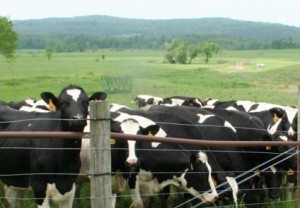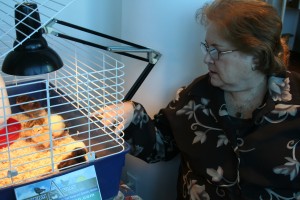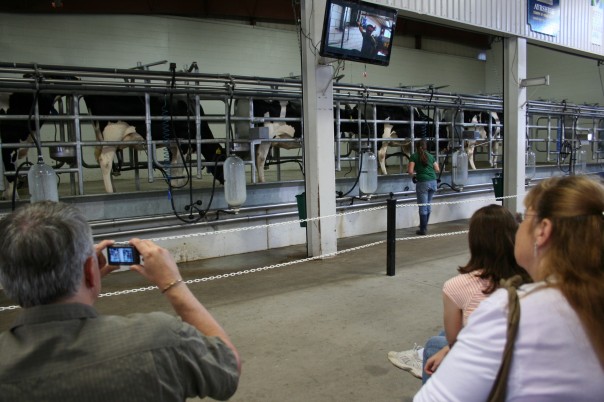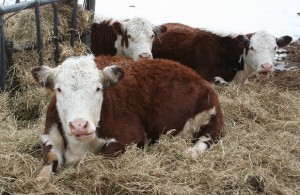Ag Board Members And For Farmland Restoration
 Members of the Governor’s Council for Agricultural Development met recently to open a new dialogue for every aspect of the state's agriculture – from farm markets and food production connections to dairy, greenhouse growers and beyond. The meeting may be viewed via CT-N online. The council has been given the following specific charges:
Members of the Governor’s Council for Agricultural Development met recently to open a new dialogue for every aspect of the state's agriculture – from farm markets and food production connections to dairy, greenhouse growers and beyond. The meeting may be viewed via CT-N online. The council has been given the following specific charges:
To make recommendations to the Department of Agriculture on ways to increase the percentage of consumer dollars spent on Connecticut Grown fresh produce and farm products, including, but not limited to, ways to increase the amount of money spent by residents of the state on locally-grown farm products, by 2020, to not less than 5 percent of all money spent by such residents on food.
 The council shall also make recommendations concerning the development, diversification, and
The council shall also make recommendations concerning the development, diversification, and
promotion of agricultural products, programs, and enterprises in this state and shall provide for an interchange of ideas from the various commodity groups and organizations represented.

Chairman Steven Reviczky, who is Connecticut's Agriculture Commissioner, introduced members of his senior staff from the Department of Agriculture also in attendance, including Dr. Bruce Sherman, director of the Bureau of Inspection and Regulation; David Carey, director of the Bureau of Aquaculture and Laboratory; Joseph Dippel, director of Farmland Preservation; Bob Pellegrino, director of the Bureau of Agricultural Development and Resource Preservation; and George Krivda, legislative program manager.
Reviczky presented a brief slide show illustrating examples from Rhode Island, Vermont, North Carolina, Illinois, and Iowa, all of which have developed or are in the process of developing state-level plans for food and agriculture.

Jiff Martin from UConn Cooperative Extension and Melissa Spear from Common Ground, part of a working group that met in the summer and fall of 2011 to discuss some of the state’s important agricultural issues, presented recommendations to the council. The group also reviewed UConn’s agricultural economic impact study, which determined the state's agricultural sector contributes $3.5 billion annually to the economy and creates 20,000 jobs. Spear showed a pie chart illustrating the make-up of agricultural sales in Connecticut, including $270 million in nursery products and $132 million in forest products, and pointed out that while those two sectors were touched upon only minimally in their proposal, they are nonetheless very important to the state’s agricultural industry.
Opportunities for growth include rising demand for locally-grown food, national attention to the impact food has on public health, room for food retailers to meet demand for local food, the ability to use SNAP at farmers’ markets, ample suitable land and greenhouse space for food production, an under-utilized regional market in Hartford and other processing and distribution facilities in the state, and a passionate and vibrant community of food activists and advocates.
Martin described the challenges identified by the working group that include state procurement
policies; lack of coordination among state agencies with food authority; lack of baseline data for food consumption; aggregation, distribution, and processing infrastructure that is inadequate or not designed for a local food system; a complex and burdensome regulatory environment; and a lack of training and education for food entrepreneurs and in nutrition education.
The working group’s recommended actions include improving state leadership, planning, and coordination with regard to the food system; strengthening the path from farm to institution; developing a key foods growth strategy; and strengthening food system training and education.
Spear explained dairy was very important among the working group’s considerations. Vice Chair Talmage added that he was member of the working group that produced the proposal, and that the approach of its recommendations was broad and that the issues are complex.
Members of the council (biographies are linked here) are –
 Erica Andrews, Hurricane Farm, Scotland, appointed by Governor Malloy; representing agricultural production;
Erica Andrews, Hurricane Farm, Scotland, appointed by Governor Malloy; representing agricultural production;
Allyn Brown III, Maple Lane Farms LLC and Connecticut Currant, LLC, Preston, appointed by Governor Malloy; representing agricultural production;
 Winter Caplanson, Coventry Regional Farmers’ Market, Coventry, appointed by Senate President Pro Tempore Donald E. Williams, Jr. representing agricultural marketing;
Winter Caplanson, Coventry Regional Farmers’ Market, Coventry, appointed by Senate President Pro Tempore Donald E. Williams, Jr. representing agricultural marketing;
James Guida, Guida’s Milk, Kensington, appointed by Speaker of the House Christopher Donovan representing agricultural processing;
George Hindinger, Hindinger Farm, Hamden, appointed by Governor Malloy, representing agricultural production;
Jason Hoagland, Connecticut Agricultural Education Foundation, Windsor, appointed by Senate Minority Leader John McKinney; representing agricultural education;
Herb Holden Jr., Double H Acres, Broad Brook, appointed by Governor Malloy; representing agricultural production;
Jamie Jones, Jones Family Farms, Shelton, appointed by Governor Malloy, representing agricultural production;
Michael Keilty, Maple Spring Farms, Morris, appointed by Senate Majority Leader Martin Looney; representing an agricultural trade association;
Shelly Oechsler, Botticello Farms, Manchester, appointed by Governor Malloy; representing agricultural production;

Kevin Sullivan Jr., Chestnut Hill Nursery, Stafford, appointed by House Minority Leader Larry Cafero, representing the green industry.
Vice chairs are Henry Talmage, Connecticut Farm Bureau Association, and Gregory Weidemann, University of Connecticut, Storrs.
In related news, the State Bond Commission has approved $5 million in funding for the Department of Agriculture's new Farmland Restoration Program, a voluntary program that provides matching grants of up to $20,000 for restoration activities that “increase the state's farmland resource base for agriculture, with an emphasis on prime and important farmland soils and on human and livestock food production.”
Priority will go to projects targeting production of fruits and vegetables. The agency will consider livestock, livestock feed, and support production second, with tertiary consideration given to other uses based on land use and acreage to be restored for agricultural production.
Grants can be used for clearing and removal of trees, stumps, stones, and brush to create or restore agricultural use; installation of resource protection barriers to protect crop fields on restoration areas; restoration of shellfish beds or aquaculture ponds; and removal of invasive plants and hedgerow management for reclamation of overgrown fields, pastures, and meadows.
A program overview is available at www.CTGrown.gov or call (860) 713-2511.



